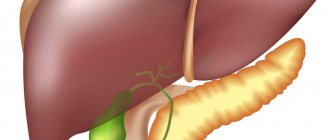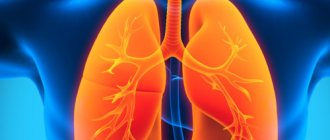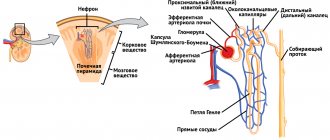Causes
Congenital elephantiasis of the feet
Problems in genetics affect the formation of the entire human lymphatic system. Congenital diseases that predetermine the onset of the disease include:
- Milroy-Mage disease;
- Shereshevsky-Turner syndrome.
The baby inside the womb may develop vascular dysplasia or abnormalities of the lymphatic system, which will cause excess lymph.
Women under 35 years of age are primarily at risk.
Acquired elephantiasis
One of the most common causes of elephantiasis is filaria infection. These parasites infect the lymphatic system and subcutaneous tissue. As a result of their vital activity, the walls of blood vessels thicken, gradually becoming clogged, which leads to thrombosis and the impossibility of lymph outflow. The worms themselves form dense balls and also become a barrier.
Filaria are found in the southern tropics. Infection occurs through a mosquito bite.
Other causes of elephantiasis:
- tumors in the lymph nodes and lymphadentitis. The disease is caused by treatment of tumors, especially chemotherapy and surgical removal.
- Streptococcus aureus and accompanying erysipelas. Toxins cause the body to secrete more antibodies and attack the infected tissue area with them. Cells strive to repair damage. By multiplying hyperactively, they increase the volume of lymph nodes.
- Any severe damage to the skin (burns, wounds). Initially, the outflow of lymph causes slight swelling, and if measures are taken, the development of the disease can be easily avoided.
- Varicose veins and any other vascular pathologies affect the exchange of fluids in the body.
Drug therapy
Therapy is aimed at eliminating the main cause of elephantiasis and any inflammation in the body, as well as:
When stage 1-2 develops, the doctor will prescribe the following medications to the patient:
During therapy, you must take vitamins. If parasites are detected, use anthelmintic drugs (Helmintox, Nemotsid). In case of streptococcal infection, antibiotics will be required.
Symptoms
Early stage of elephantiasis
Another name is lymphedema. Characterized by slight swelling of the lower legs at the end of the day or during menstruation.
No pain or impairment of motor activity is observed. After rest, the limbs acquire a normal appearance. The skin is easily pulled back. This stage usually lasts a year.
Carrier stage
The swelling becomes permanent, the skin turns blue, and palpation is painful. It is impossible to gather the skin into a fold. Convulsions appear. With fibroderma, the doctor notes the first compaction. Develops over 7 years.
Blockage stage
The last stage is elephantiasis.
Elephantiasis of the feet has the following symptoms:
- The connective tissue grows greatly, stretching the skin and giving it a bluish tint.
- The leg looks bloated, swollen and looks like a cylinder. When pressed, there is no hole left.
- Pain syndrome and chronic fatigue appear.
- necrotic processes are triggered, requiring constant medical monitoring.
- Joints lose mobility.
Symptoms
Symptoms of elephantiasis
The initial stage of development of the disease occurs in a latent form for a long time. The patient may be bothered by short-term pain in the joints, slight swelling after prolonged physical activity and stress. Gradually, the disease will worsen, which is characterized by a pronounced clinical picture.
Elephantiasis symptoms are as follows:
- if this is not a congenital form of the disease, then first one limb is involved in the process, and then the other;
- there is a feeling of fullness in the leg/arm;
- rapid fatigue even with minor and short-term physical activity;
- swelling develops in a place distant from the affected lymph node;
- swelling swelling - in the case of the lower extremities, swelling gradually rises up and reaches the thigh;
- the skin at the site of edema becomes smooth and shiny;
- the pattern of the subcutaneous veins disappears, the skin turns pale;
- lymph nodes enlarge;
- the temperature may rise at the site of swelling;
- compaction of the affected area of the body, which is caused by the replacement of interstitial fluid with connective tissue;
- rashes, diaper rash, and ulcers form on the skin due to atrophy of the sweat and sebaceous glands and the proliferation of bacteria;
- fistulas with yellow discharge form on the skin;
- allergic reactions throughout the body;
- failure of blood circulation leads to pigmentation disorders;
- the formation of hard tubercles throughout the body, which are separated by skin folds.
In this state, the patient may exhibit mental disorders: isolation, apathy, deep depression, irritability. General health worsens, which can lead to exacerbation of chronic diseases, if any.
Diagnostics
Examination of the affected area
At the first appointment, the doctor collects anamnesis, asking the patient questions about:
- presence of problems with blood vessels;
- visiting southern countries;
- nature of edema;
- the general condition of the body, especially the heart and kidneys.
Next, the specialist examines the existing symptoms to confirm the diagnosis and determine the stage of the disease:
- with mild swelling, the skin is pale, and when pressed, a mark remains. Possible urticaria.
- With dense swelling, the lymph nodes and canals are easily palpated. Swelling rises from the feet up to the thigh. Motor capabilities are reduced. Pain occurs when touched. There is a noticeable increase in volume.
- With elephantiasis, the dermis is rough, abnormally elastic, maximally stretched and lumpy. The limb has significantly increased in size compared to the norm. There is an increase in fatty tissue.
Before prescribing treatment, the doctor must make sure that external signs are not caused by severe swelling associated with a disease of the internal organs. For this purpose, hardware research methods are used.
Angiography
An X-ray contrast lymphogram is difficult to perform and harmful to health, and is prescribed only as a last resort if other tests have not confirmed the diagnosis.
Surgery
When treatment is not completed on time and the disease is advanced, surgical intervention will be required. The procedure will need to be supplemented with the use of medications during rehabilitation. The operation is performed to artificially establish lymphatic drainage pathways and reduce painful areas.
Indications for intervention are:
Contraindications to the operation are:
The patient will need to follow a diet with limited salts and protein, and reduced water consumption.
There are several methods of surgical treatment; the doctor selects the appropriate one for each patient, based on the stage, signs and existing underlying diseases. After the procedure, the load on the lower limbs gradually increases. Physiotherapy is used. The person will need to wear elastic stockings and wrap their legs with bandages.
Which doctor should I contact?
Depending on the suspected cause of elephantiasis, it is necessary to contact specialists in different fields:
- an infectious disease specialist will help with erysipelas;
- suspicion of helminths can be confirmed by a parasitologist;
- As usual, the surgeon will tell you what elephantiasis is and how to treat it.
Etiology
Depending on the etiology, primary and secondary S. are distinguished. Primary S. includes the so-called. idiopathic (essential) elephantiasis, which usually develops at a young age. According to some researchers, congenital lymphangiopathy is important in the occurrence of primary idiopathic S.. Primary also includes certain types of congenital S. Thus, in 1892, WF Milroy described hereditary S. (Milroy’s disease), which he traced in six generations of one family, finding S. of the lower extremities in 20 people . out of 97, especially progressive during puberty. Primary congenital S. (without indications of it in the family history) can be associated with malformations of the lymphatic system (see) in the form of aplasia (see), hypoplasia (see) or hyperplasia (see) of collector lymphatic vessels (see. ) with insufficiency of the valve apparatus. In adults, primary congenital S., according to various sources, accounts for from 2 to 6.2% of the total number of patients with S. Some researchers associate individual cases of primary S. with damage to the central nervous system, endocrine disorders, etc.
Secondary S. may be associated, for example, with the development of amniotic constrictions, which, by squeezing the circularly soft tissues of the fetal limb, interfere with normal lymphatic drainage (see Amniotic threads, constrictions, adhesions). As a rule, secondary S. is a complication of many inflammatory and non-inflammatory diseases. Most often, S. develops after suffering erysipelas (see Erysipelas), occasionally with tuberculosis of bones, joints, lymph nodes and skin (see Extrapulmonary tuberculosis), lymphadenitis (see), lymphangitis (see), furunculosis (see. Furuncle), pyoderma (see), syphilitic granulomas (see Syphilis), chronic inflammation of the vagina (see), rectum (see), etc.
A special place in the occurrence and development of S. is occupied by erysipelas. Erysipelas often occurs against the background of an already developed lymph circulation disorder, however, there is no doubt that each relapse sharply aggravates the lymph circulation disorder. Some researchers believe that the occurrence of S. in erysipelas, as in other inflammatory diseases, is in many cases due to hidden congenital lymphangiopathy. In tropical and subtropical countries, in the etiology of S. of the lower extremities and external genitalia, a large role is played by helminths - filarias (see Filariasis), which, penetrating into the lymph, vessels of the skin of the scrotum (see), penis (see), less commonly, the labia majora and minora cause a chronic, torpid inflammatory process and, in addition, with their mass they clog the lymphatics and capillaries. Under certain conditions, secondary S. can be caused by compression of the proximal parts of the limb by scars after mechanical injuries, deep burns (see), surgical removal of collector lymph, vessels and nodes, radiation therapy (see). S. of the external genitalia, in addition, can be caused by urinary infiltration of tissues with urethral stricture, inguinal lymphogranulomas (see Lymphogranulomatosis inguinal), erysipeloid (see), etc.
One should distinguish from S. the so-called. secondary lymphatic edema that occurs due to pathology of the main blood vessels - arteries (see) and veins (see).
How is elephantiasis treated?
When prescribing treatment, the doctor pursues the following goals:
- restoration of normal lymph circulation;
- vascular healing;
- return of motor activity.
Drug treatment
Effective in the first 2 stages of the disease and is carried out for:
- normalization of metabolic processes in cells and tissues;
- strengthening blood vessels;
- preventing an increase in fibrosis.
The following drugs are usually given:
- angioprotectors for blood vessels;
- antihistamines and diuretics for swelling;
- antispasmodics restore lymph flow;
- vitamin and mineral complexes to improve skin condition;
- enzymes for eliminating fatty tissue;
- anti-inflammatory to reduce pain;
- biostimulating substances to soften rough swelling.
Surgery
With the rapid development of elephantiasis of the legs or relapses of erysipelas, urgent help is needed for the body to create new pathways for the drainage of lymph.
The following steps are taken as preparation:
- You should start with analyzes and additional research to understand the current situation.
- For inflammation, antibiotics are prescribed.
- The doctor prepares a special diet with a minimum of salt and increased protein content for better rehabilitation. Liquid intake is also limited.
In medicine, there are several methods of surgical treatment of the disease. The surgeon chooses the appropriate one in each specific case, based on the stage, symptoms and the presence of underlying diseases:
- Vascular restoration.
- Creation of anastomoses.
- Reducing the volume of a limb by gradually cutting off excess fatty tissue.
After surgery, the load on the legs increases gradually. For rehabilitation, an additional course of antibiotics is prescribed and physiotherapy is prescribed.
Treatment: basic methods
Drug therapy
You can treat elephantiasis in the legs using different methods, it all depends on the stage of the disease. At first, the pathology can be cured with the help of conservative therapy, which includes medications and therapeutic massage. The drug complex includes antibiotics, drugs against parasites and antihistamine drugs. In case of bacterial infection, the doctor must prescribe the patient to take anti-allergy medications. If they are not taken, significant intoxication will occur due to the gradual death of bacteria and parasites.
Individual treatment, selected by a qualified specialist, will help reduce the formation of lymph. With medications, tissues will receive a large amount of nutrients, and a rapid metabolic process will occur. It is extremely important to start therapy in a timely manner, since pathology in the second and third stages requires surgical intervention.
With significant changes in the human body, elephantiasis will require surgical intervention.
Surgery
In severe cases, when irreversible processes in the body have begun to occur that cannot be eliminated with the help of medications, surgery is prescribed. Surgical intervention is aimed at ensuring lymph drainage. During the operation, the surgeon creates artificial channels through which lymphatic fluid can circulate normally. The operation is contraindicated in cases where there are blood or heart diseases, or severe pathologies of the liver and lungs. Doctors do not perform surgery on older patients. After surgery, the patient is prescribed antibacterial drugs to prevent suppuration.
Treatment with folk remedies
Elephantiasis is treated with folk recipes, which are used together with drug therapy or after surgery. Garlic and honey (250 grams and 350 grams) are used for treatment. The garlic is crushed and honey is added to it, the prepared product is left to stand for a week in an unlit place. Take a tablespoon three times a day for a month.
Chicory and ginger are effective in treating elephantiasis. For one teaspoon of chicory, take a pinch of ginger and add boiled water. The treatment course lasts 10 days. This folk remedy affects the removal of toxins from the body and dilates blood vessels. To treat elephant feet, tea made from hazel leaves is used. For half a liter of boiling water, take two tablespoons of chopped hazelnuts. The tea is allowed to brew for two hours, and then consumed an hour before meals, half a glass. Remember that you should not take traditional medications without consulting your doctor.
Prevention of elephantiasis
In the early stages of development, elephantiasis responds well to treatment. But if cases of the disease have been recorded in the family, then both diagnosed patients and simply predisposed people need to carefully monitor their own health in order to take preventive measures in a timely manner.
- Treatment of even minor swelling. Light self-massage, raising your legs above the level of the pelvis, and taking medications after consultation with a specialist will help with this.
- Proper nutrition and weight control. Extra pounds strain the lymphatic system and contribute to swelling of the legs. Salty and spicy dishes, foods high in easily digestible carbohydrates (sweets, baked goods) are contraindicated.
- Personal hygiene. Skin diseases and erysipelas should not be allowed. To do this, you need to regularly wash your feet with moisturizing bactericidal soap and wear only natural fabrics.
- Comfortable shoes that don't restrict your feet.
- Regular exercise. Physical inactivity leads to congestion in the legs and contributes to weight gain.
- Both in sunny weather and in cold weather, you should dress according to the season and avoid frostbite or burns.
Elephantiasis is an unpleasant disease of the lower extremities, expressed not only in loss of motor activity, but also in a repulsive appearance.
There is treatment, and it is better to start it early. If there are similar cases in the family, then the rest of its members need to carefully monitor their health and follow preventive measures.
Recommendations from traditional healers
Treatment of leg swelling with natural folk remedies is also used. They cannot lead to a complete recovery, but in combination with the methods and drugs of classical medicine they will alleviate the patient’s condition:
- An effective remedy for elephantiasis, which helps eliminate swelling of the affected limb, is garlic with the addition of honey. To do this, 250 grams of garlic pulp is mixed with honey (350 grams). After this, the product is infused in a place protected from light for one week. It should be taken one large spoon, on an empty stomach, 30 minutes before breakfast, lunch and dinner. The disease must be treated in this way for at least one month. In this case, garlic is used to strengthen the walls of blood vessels and cleanse the lymphatic fluid. Honey helps boost immunity, reduce inflammation and improve blood supply to blood vessels.
- Ginger and chicory in the form of powder from these plants also have a beneficial effect. They remove toxic substances, dilate the walls of blood vessels, help speed up the flow of lymphatic fluid, and also reduce allergic reactions. You need to treat with a decoction (a glass of boiling water with a small spoon of chicory and a pinch of ginger).
- Treatment for elephantiasis of the legs is carried out with tea made from hazel leaves. Two large spoons of crushed leaves are poured into 500 ml of boiling water and left in a thermos for two hours. Take 100 ml, one hour before meals, four times a day. This product improves the trophism of the skin of the legs and eliminates congestion.
- For lymphostasis, you can use a collection of herbs that has a complex composition. It is made from birch and oak bark, horse chestnut fruits (20 grams each), immortelle grass and astragalus (30 grams each) with the addition of 50 grams of Icelandic moss. All components must be mixed and stored in a glass container. It is recommended to use a fresh decoction - two large spoons of the mixture per 500 ml of boiling water, cook for another five minutes, then leave until cool. After straining, drink 100 ml up to 4 times a day.
- It helps well with elephantiasis if you moisten a woolen cloth and soap it with simple laundry soap, and then apply it as a compress to the sore limb.
- Traditional healers recommend regularly drinking tea with lingonberries for problems with lymphostasis (one large spoonful of leaves per glass of boiling water). Brew in a thermos and drink after an hour of infusion. You can add a little honey to add sweetness.









